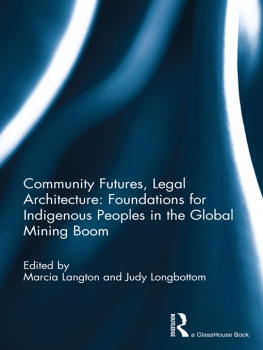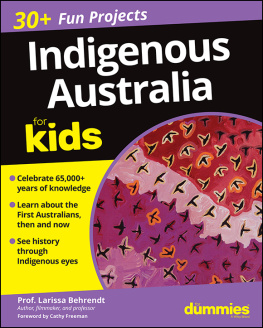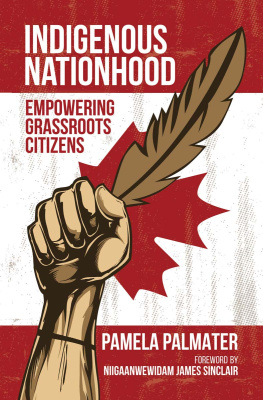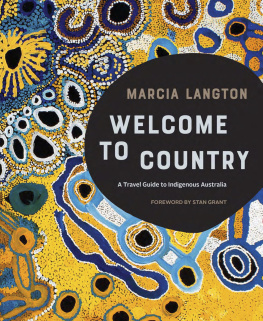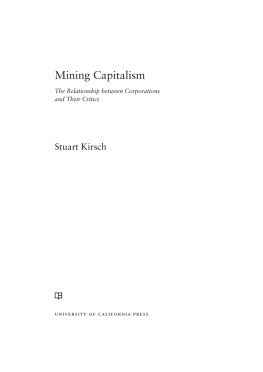Marcia Langton (editor) - Community Futures, Legal Architecture: Foundations for Indigenous Peoples in the Global Mining Boom
Here you can read online Marcia Langton (editor) - Community Futures, Legal Architecture: Foundations for Indigenous Peoples in the Global Mining Boom full text of the book (entire story) in english for free. Download pdf and epub, get meaning, cover and reviews about this ebook. year: 2012, publisher: Routledge, genre: Politics. Description of the work, (preface) as well as reviews are available. Best literature library LitArk.com created for fans of good reading and offers a wide selection of genres:
Romance novel
Science fiction
Adventure
Detective
Science
History
Home and family
Prose
Art
Politics
Computer
Non-fiction
Religion
Business
Children
Humor
Choose a favorite category and find really read worthwhile books. Enjoy immersion in the world of imagination, feel the emotions of the characters or learn something new for yourself, make an fascinating discovery.
- Book:Community Futures, Legal Architecture: Foundations for Indigenous Peoples in the Global Mining Boom
- Author:
- Publisher:Routledge
- Genre:
- Year:2012
- Rating:4 / 5
- Favourites:Add to favourites
- Your mark:
Community Futures, Legal Architecture: Foundations for Indigenous Peoples in the Global Mining Boom: summary, description and annotation
We offer to read an annotation, description, summary or preface (depends on what the author of the book "Community Futures, Legal Architecture: Foundations for Indigenous Peoples in the Global Mining Boom" wrote himself). If you haven't found the necessary information about the book — write in the comments, we will try to find it.
How are indigenous and local people faring in their dealings with mining and related industries in the first part of the 21st century? The unifying experience in all the resource-rich states covered in the book is the social and economic disadvantage experienced by indigenous peoples and local communities, paradoxically surrounded by wealth-producing projects. Another critical commonality is the role of law. Where the imposition of statutory regulation is likely to result in conflict with local people, some large modern corporations have shown a preference for alternatives to repressive measures and expensive litigation. Ensuring that local people benefit economically is now a core goal for those companies that seek a social licence to operate to secure these resources. There is almost universal agreement that the best use of the financial and other benefits that flow to indigenous and local people from these projects is investment in the economic participation, education and health of present generations and accumulation of wealth for future generations. There is much hanging on the success of these strategies: it is often asserted that they will result in dramatic improvements in the status of indigenous and local communities. What happens in practice is fascinating, as the contributors to this book explain in case studies and analysis of legal and economic problems and solutions.
Marcia Langton (editor): author's other books
Who wrote Community Futures, Legal Architecture: Foundations for Indigenous Peoples in the Global Mining Boom? Find out the surname, the name of the author of the book and a list of all author's works by series.

